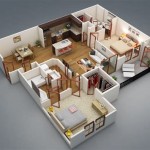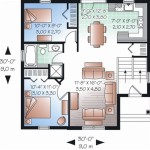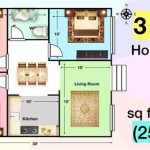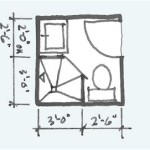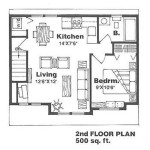Huge Master Bedroom Floor Plan: Design and Optimization Strategies
A huge master bedroom presents a unique opportunity to create a personal sanctuary, far exceeding the simple function of a sleeping space. However, with this expanded square footage comes the challenge of effectively utilizing the available room to maximize comfort, aesthetics, and overall functionality. Planning a huge master bedroom floor plan requires careful consideration of furniture placement, traffic flow, and designated zones for various activities beyond sleeping. This article will delve into the key considerations for designing a huge master bedroom, focusing on strategies to optimize space and create a cohesive and relaxing environment.
Defining Zones and Functionality
One of the primary steps in designing a huge master bedroom floor plan is defining distinct zones, each serving a specific purpose. This approach prevents the room from feeling cavernous and disorganized, instead fostering a sense of order and intentionality. Common zones within a large master bedroom include the sleeping area, dressing area, sitting area, and potentially a home office or exercise space. The size and configuration of each zone will depend on individual needs and preferences.
The sleeping area, typically the focal point, should accommodate the bed, nightstands, and potentially a bench or chaise lounge. The placement of the bed is crucial, ideally positioned to offer a view and avoid direct alignment with the doorway. Consider the size of the bed; a king-size bed is often appropriate for a huge master bedroom, providing ample sleeping space. Nightstands should be adequately sized to accommodate lamps, books, and personal items.
The dressing area is often integrated with a walk-in closet, providing a dedicated space for clothing storage and grooming. Depending on the size of the closet, this area may include a vanity, dressing table, and full-length mirror. Adequate lighting is essential in the dressing area to ensure accurate color representation and visibility when selecting outfits. The design of the closet itself should be optimized to maximize storage capacity, with considerations for hanging space, shelving, and drawers.
A sitting area within the master bedroom provides a relaxing space for reading, conversation, or simply unwinding. This zone can be furnished with comfortable chairs, a sofa, and a coffee table. A fireplace can add warmth and ambiance to the sitting area, creating a cozy and inviting atmosphere. The location of the sitting area should be chosen to take advantage of natural light and views.
For individuals who work from home or enjoy exercising in private, a home office or exercise space can be incorporated into the master bedroom floor plan. The home office should include a desk, chair, and adequate storage for office supplies. The exercise space may include a treadmill, stationary bike, or yoga mat, depending on individual fitness preferences. It is important to consider noise levels and privacy when incorporating these zones into the master bedroom.
Optimizing Furniture Placement and Traffic Flow
Once the zones have been defined, the next step is to strategically place furniture to optimize traffic flow and create a visually appealing layout. The goal is to ensure that the room is easy to navigate and that the furniture is arranged in a way that promotes both functionality and aesthetics. Avoid overcrowding the room with too much furniture, as this can make the space feel cramped and cluttered. Instead, focus on selecting a few key pieces that are both functional and visually appealing.
The bed is typically the largest piece of furniture in the master bedroom, so its placement should be carefully considered. As mentioned previously, it is generally recommended to position the bed to offer a view and avoid direct alignment with the doorway. Ensure that there is sufficient space on either side of the bed to allow for easy access to the nightstands. The placement of the bed should also take into account the location of windows and doors, as well as any architectural features such as fireplaces or built-in shelves.
The arrangement of furniture in the sitting area should promote conversation and relaxation. Chairs and sofas should be positioned to face each other, creating a comfortable and inviting space. A coffee table should be placed within easy reach of the seating, providing a convenient surface for drinks and snacks. The placement of furniture in the sitting area should also take into account the location of windows and doors, as well as the flow of traffic through the room.
In the dressing area, the placement of furniture should be optimized for functionality and accessibility. The vanity or dressing table should be positioned to take advantage of natural light, if possible. The full-length mirror should be placed in a location where it is easy to see oneself while getting dressed. In the home office or exercise space, the furniture should be arranged to maximize productivity and comfort. The desk should be positioned to offer a view, if possible, and the exercise equipment should be placed in a location where it is easy to use.
Traffic flow is a critical factor to consider when planning a huge master bedroom floor plan. The goal is to create a layout that allows for easy movement throughout the room, without having to navigate around furniture or obstacles. Ensure that there is ample space between furniture pieces to allow for comfortable passage. Avoid placing furniture in doorways or hallways, as this can create bottlenecks and make the room feel cramped. Consider the path that one will typically take when entering and exiting the room, and arrange the furniture accordingly.
Selecting Finishes and Decor
The selection of finishes and decor plays a crucial role in creating a cohesive and relaxing atmosphere in a huge master bedroom. The color palette, materials, and accessories should complement each other and reflect personal style and preferences. The goal is to create a space that feels both luxurious and comfortable, promoting relaxation and rejuvenation.
The color palette is the foundation of the room's aesthetic. Neutral colors such as beige, gray, and white are often popular choices for master bedrooms, as they create a calming and serene atmosphere. These colors can be accented with pops of color through accessories such as pillows, throws, and artwork. Consider the amount of natural light in the room when selecting colors; darker colors can make a room feel smaller and more enclosed, while lighter colors can brighten up the space. The color palette should also complement the existing architecture and finishes of the room.
The selection of materials also plays a significant role in the overall aesthetic of the master bedroom. Natural materials such as wood, stone, and linen can add warmth and texture to the room. Consider incorporating these materials into the furniture, flooring, and window treatments. The flooring material should be comfortable underfoot, such as carpet, hardwood, or tile. The window treatments should provide privacy and light control, while also complementing the overall design of the room.
Lighting is crucial aspect of the finishing touches. Layered lighting is recommended to create a flexible and inviting space. This includes ambient lighting for general illumination, task lighting for reading and grooming, and accent lighting to highlight architectural features or artwork. Dimmable lights allow for adjusting the brightness of the room to create the desired mood. A combination of overhead lighting, table lamps, and floor lamps can provide a balanced and well-lit environment.
Accessories and artwork add personality and character to the master bedroom. Choose pieces that reflect personal interests and style. Artwork should be chosen to complement the color palette and overall design of the room. Accessories such as pillows, throws, and rugs can add texture and warmth. Plants can also add a touch of nature to the room, creating a more relaxing and inviting atmosphere. Avoid cluttering the room with too many accessories; instead, focus on selecting a few key pieces that have meaning and visual appeal.

Huge Master Suite 23332jd Architectural Designs House Plans

Pin Page

Master Bedroom Floor Plans Types Examples Considerations Cedreo

Master Bedroom Plans

West Day Village Luxury Apartment Homes

4 Bedroom French Country Plan With Huge Master Suite 2053 Sq Ft 51782hz Architectural Designs House Plans

Whole Floor Master Suite Plan Help

Luxury Master Bath Large Floor Plans

House Plan 5 Bedrooms 3 Bathrooms Garage 3890 Drummond Plans

5 Design Concepts For Master Bedroom Designs

